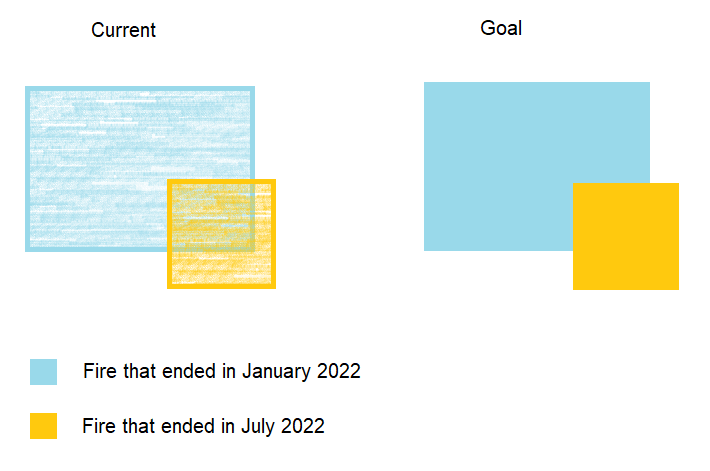I am trying to associate presence points (where a bird was sighted) in a given month (e.g. December 2022) to the most recent fire that occurred in that area. I am planning on generating a raster (5km resolution (to match my other variables), so it's pretty low resolution) that I can use for MaxEnt modeling.
I have a multi-polygon shapefile that represents all historic fires (source: https://digital.atlas.gov.au/datasets/digitalatlas::historical-bushfire-boundaries-3/about). Each polygon on this shapefile represents a different fire, and some polygons overlap. I want to get rid of this overlap and prioritise the most recent fire dates.
For my December 2022 presence points, I filter the fire shapefile to only show me fires that started on or before December 2022, and then I try to do the following:
- Union (no overlay)
- Then Aggregate (group by $geometry, aggregate by the end date of the fire)
- Then Dissolve (by the end date of the fire)
However, I keep getting errors during the 'union'. When I try to run v.clean (with or without snap set to 0.1), it crashes QGIS.
The results of my attempts so far:
No step prior to running 'Union' --> I receive the error: 'Could not add feature with geometry type MultiLineString to layer of type MultiPolygon' --> buffering did not help. Multipart to singlepart did not help. Fixing geometries did not help. v.clean crashes.
Filtering out polygons of a certain size (only keep $area > 0.1) --> I receive the error: 'Difference failed' --> dissolve & then fix geometries did not help. v.clean crashes.
Filtering out polygons of a certain size (only keep areaha > 0) --> I receive the error: 'Intersect failed' --> dissolve & then fix geometries did not help. v.clean crashes.
Note: I am using QGIS and can also use R.

